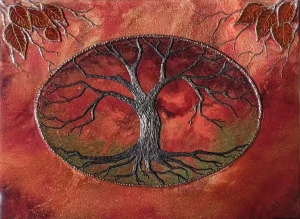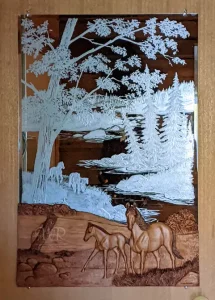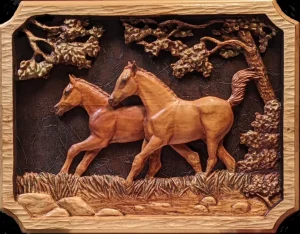





Please check this page periodically to see my latest work. We’ve been working on renovations to our home, so many of the new pieces are for projects here. I’m including these, hoping they might give you some decorating ideas.

This Tree of Life was created on an 18" x 24" sheet of glass. The background is ArtResin and mica. The rest of the detailing is Apoxie Sculpt highlighted with mica.

Playtime is a basswood carving. It was created to be the center panel for a hall door. Check back to see the finished door.

This mixed media (wood carving and etched mirror) was created to be the feature for a hall door.
If you would like to purchase or commission a painting or other type of art, please call or e-mail me, I will gladly answer any of your questions.